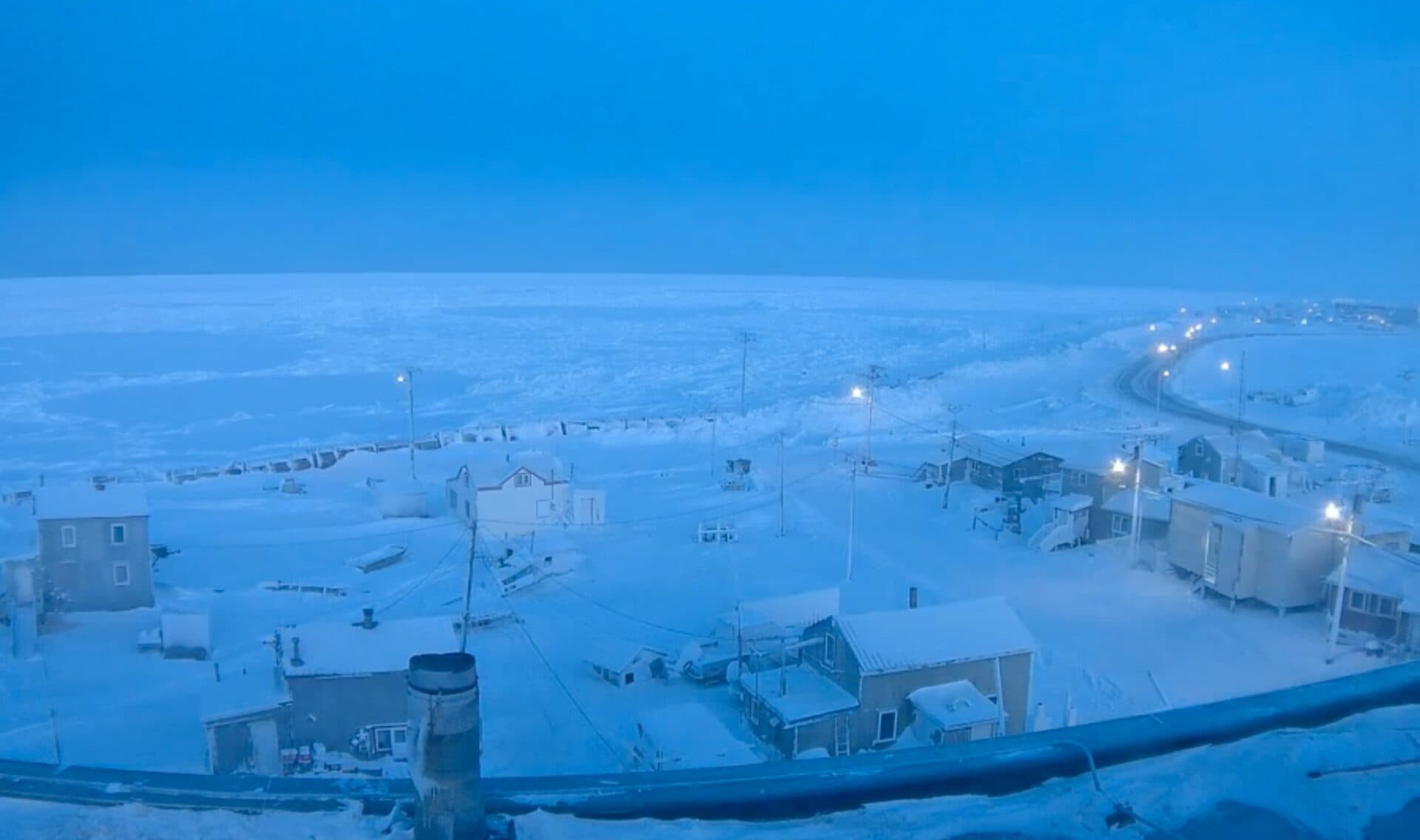Utqiagvik Enters Polar Night, No Sunrise Until January 22
Utqiagvik on Alaska's North Slope saw its last sunset on November 18, 2025, beginning the community's annual polar night when the sun stays below the horizon. Residents will not see the sun above the horizon again until January 22, 2026, a seasonal pattern that shapes daily life, weather, and public health across the borough.

Utqiagvik, formerly known as Barrow, entered its annual polar night on November 18, 2025, as the sun dropped below the horizon and will remain absent from the sky until January 22, 2026. The phenomenon, driven by the tilt of the Earth and the town's latitude, marks a period when the community on the Arctic Ocean adapts to extended darkness and short windows of twilight.
The astronomical cause is straightforward. Earth tilts on its axis by roughly 23.5 degrees, and Utqiagvik sits at about 71.17 degrees north latitude well inside the Arctic Circle. That geometry ensures the sun stays below the horizon for an extended period each winter. Although full daylight disappears, residents will still experience hours of civil twilight on some days when the sky brightens enough for outdoor movement without artificial light.
The change in daylight is more than a curiosity. It shapes local weather and temperature patterns. With reduced solar heating, conditions tend to grow much colder and the dynamics of the polar vortex can influence storms and air masses over the region. Those shifts affect travel, subsistence activities, and the operation of infrastructure that must function in colder, darker months.
For community health, the polar night brings predictable challenges. Extended darkness can affect sleep, mood, and mental health, and colder conditions increase risks of cold related illness and require more energy for heating. In remote Arctic communities where costs for fuel and deliveries are already high, the added strain of winter conditions highlights issues of equity and access. Public health planning and local services must account for increased demand for medical care, emergency response, and social supports during the darkest months.
Culturally, residents rely on the short daily windows of twilight for outdoor work, travel between communities, and subsistence practices that are timed to seasonal light cycles. The distribution of sunlight over the year balances out, so that Utqiagvik receives roughly the same total annual sunlight as more southerly cities, but the light comes in concentrated periods of midnight sun and extended winter darkness rather than evenly across days.
Policy makers and service providers in the North Slope Borough face the annual task of ensuring reliable energy supply, maintaining transportation safety, and supporting mental and physical health during polar night. Investments in cold weather infrastructure, accessible health services, and community programs that reduce isolation are essential to protect vulnerable residents.
As Utqiagvik moves into this familiar season, residents and agencies will rely on local knowledge and coordinated services to manage the practical realities of weeks without direct sunlight. The sun is scheduled to return above the horizon on January 22, 2026, bringing renewed daylight and the gradual shift toward spring.


